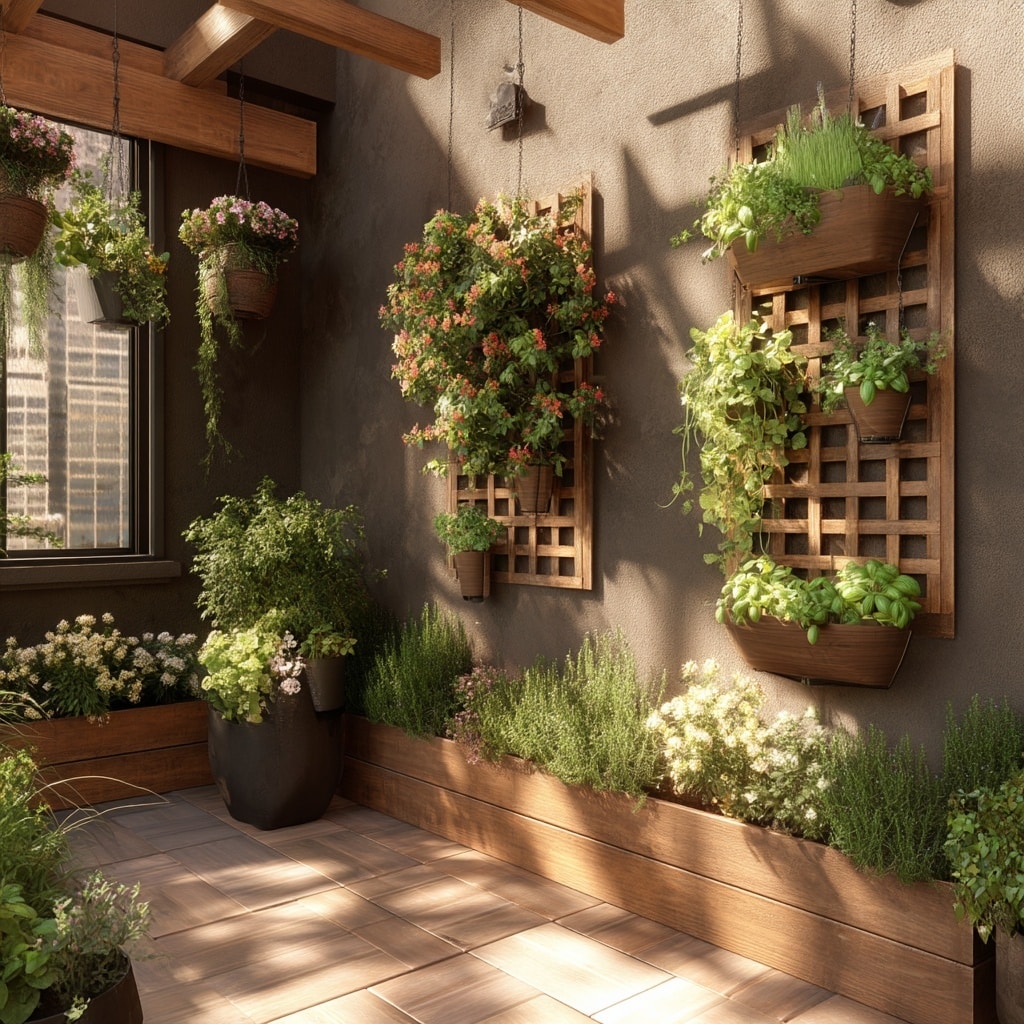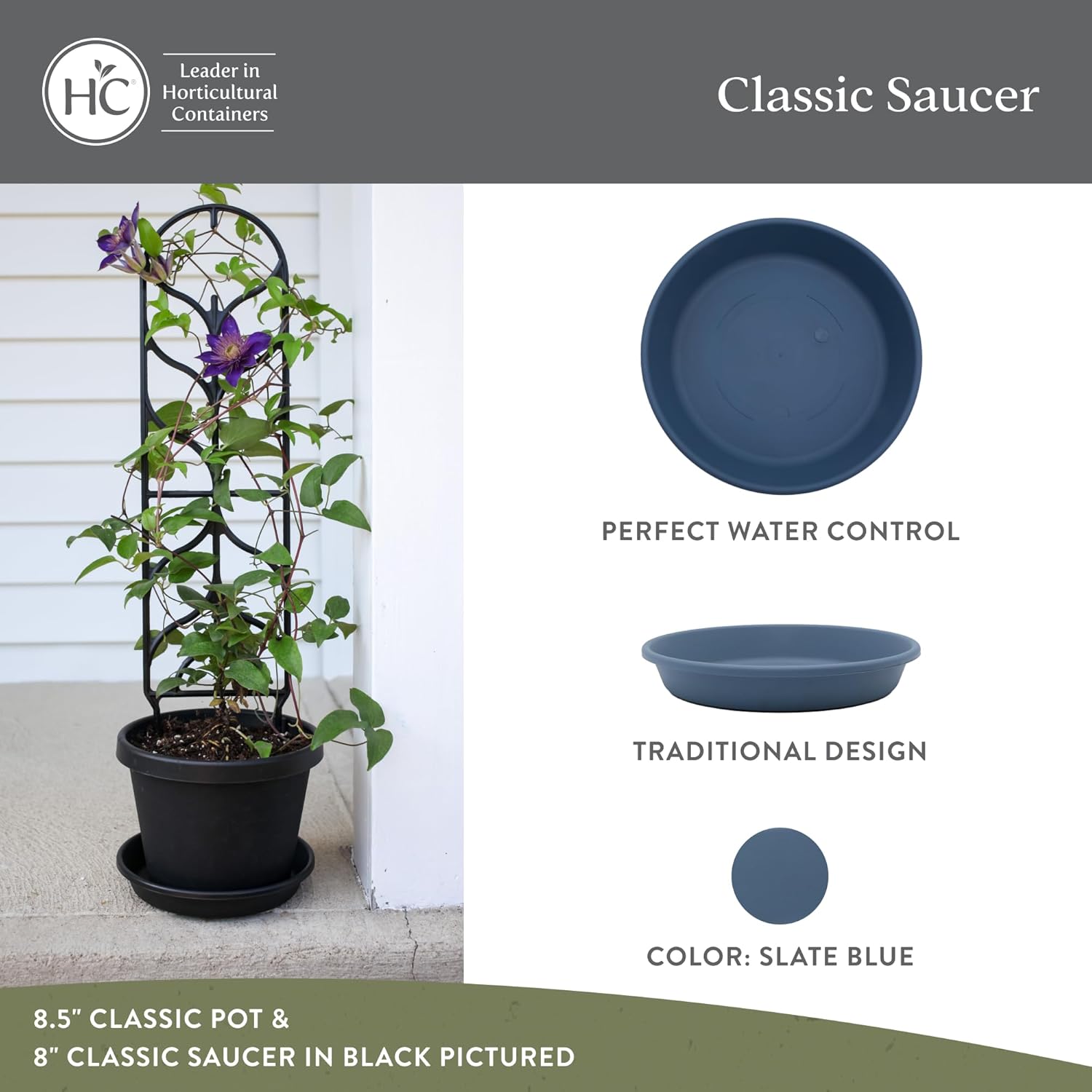Garden ideas don’t have to be grand to be effective. Even with a tiny backyard, patio, or balcony, there are countless ways to create a thriving green space that reflects your style and meets your needs. Whether you’re dealing with a cramped city yard or a narrow side strip, using the right small garden ideas for limited space can transform your outdoor area into a lush, functional retreat. From clever layouts to container-friendly plants, a little planning and creativity go a long way toward maximizing every inch of your gardening space.
Table of Contents
1. Maximize Height with Vertical Gardening
When it comes to smart garden ideas, vertical gardening is a space-saver’s dream. Instead of spreading out, go up. This method allows you to grow herbs, flowers, and even vegetables on fences, walls, and trellises—perfect for tight patios, balconies, or small backyards.
Try using wall-mounted planters, tiered shelves, or hanging pots to add greenery without sacrificing valuable ground space. Climbing plants like clematis, jasmine, and beans thrive in vertical settings and bring both beauty and bounty. Hanging baskets filled with colorful annuals or cascading herbs can soften hard surfaces and draw the eye upward, making your garden feel bigger and more layered.
A vertical setup isn’t just practical—it adds a striking visual element and can double as a privacy screen or green wall for urban homes.
2. Define Space and Improve Soil with Raised Beds
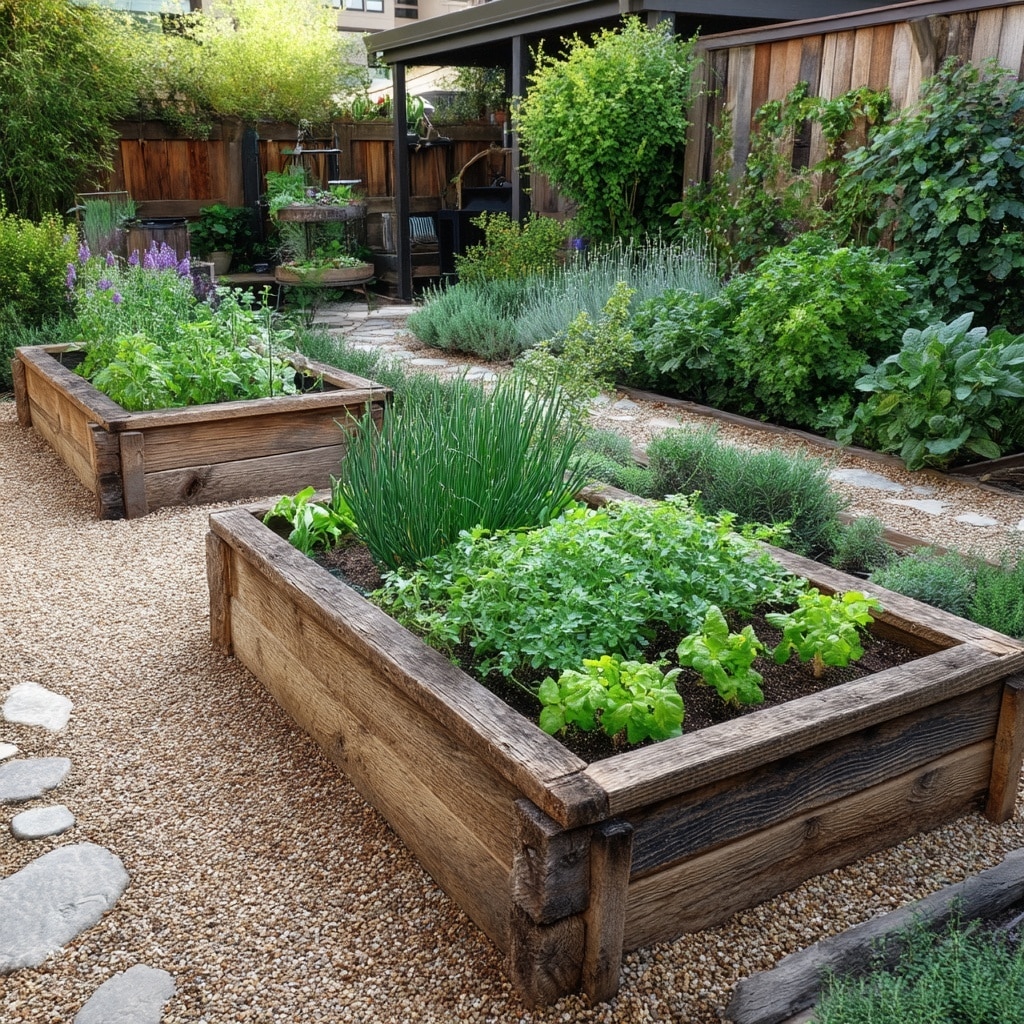
If you’re looking for garden ideas that add both function and charm, raised beds are a fantastic solution. They help you organize your layout while giving plants the healthy start they need. Especially in small spaces, raised beds create visual boundaries, making the area feel structured and less cluttered.
These elevated garden boxes improve drainage, reduce soil compaction, and let you control the soil quality—critical when you’re working with limited ground space. You can use wood, metal, or even repurposed materials to build them, and they can fit anywhere: decks, patios, or narrow side yards.
Raised beds are great for vegetables, herbs, and flowers. Try grouping multiple small beds by type—one for leafy greens, another for herbs, and a third for flowering plants—to create functional zones within your garden.
For even better results, consider installing a drip irrigation system to keep your raised beds watered efficiently without waste.
3. Choose Compact Plants That Pack a Punch

One of the smartest garden ideas for small areas is selecting plants that won’t take over your limited space. Instead of sprawling crops like pumpkins or bulky shrubs, go for compact or dwarf varieties that grow well in containers or raised beds.
For herbs, stick with tried-and-true favorites like basil, thyme, mint, parsley, and cilantro. These are not only space-saving but also incredibly useful in the kitchen. When it comes to vegetables, cherry tomatoes, radishes, lettuce, spinach, and peppers are all excellent candidates for small gardens. They’re fast-growing, easy to manage, and thrive in tighter quarters.
Don’t skip the flowers—petunias, marigolds, and pansies add bright color without hogging space. And if you want a bit of vertical interest, consider columnar fruit trees or narrow shrubs that offer height without width.
The key is balance: pick plants that thrive in close quarters and complement each other in terms of growth habits, colors, and care needs.
4. Build a Living Wall for Instant Green Impact
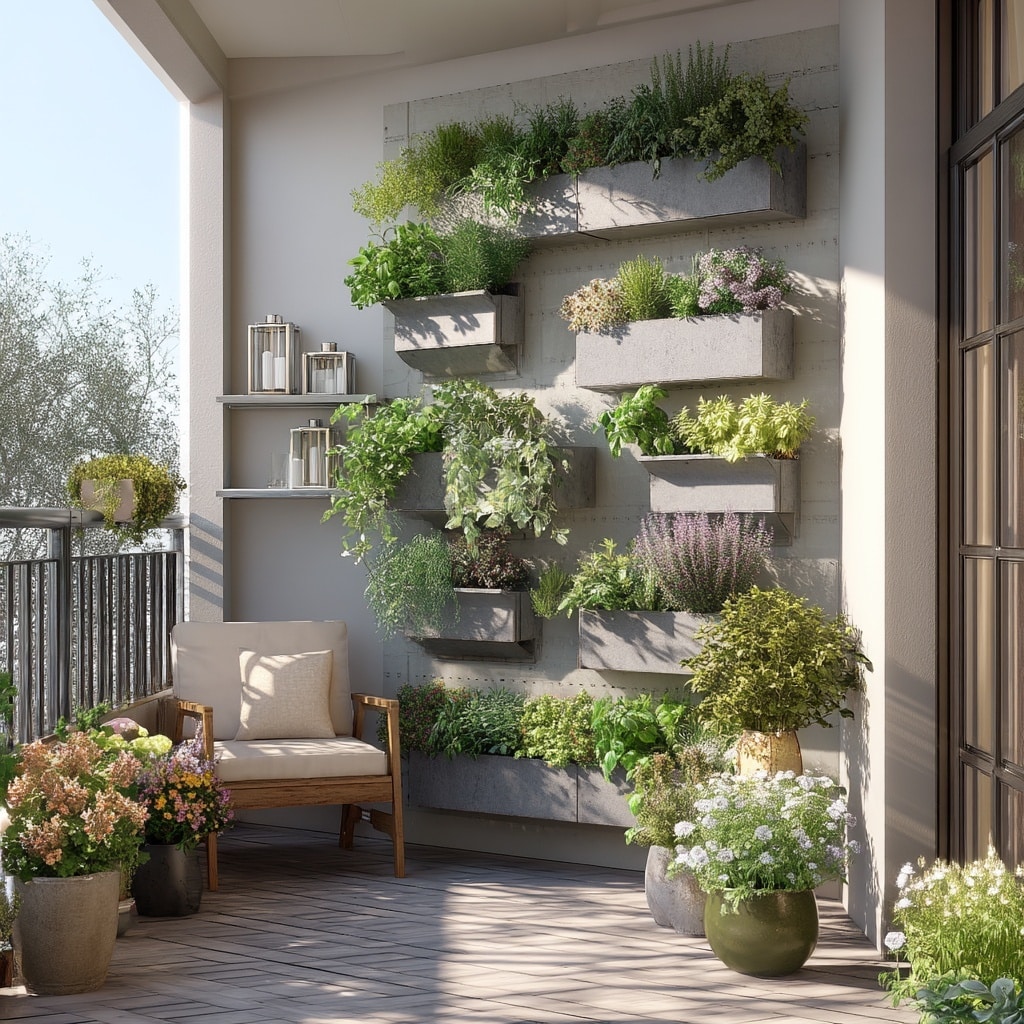
A living wall is one of the most innovative garden ideas for turning bare fences or walls into vibrant, plant-filled displays. Ideal for balconies, patios, or even narrow walkways, these vertical plant setups bring lush greenery to eye level—without taking up any floor space.
You can create your own living wall by mounting small pots, using vertical planters, or installing modular systems that hold herbs, succulents, or flowering plants. They’re flexible, easy to install, and can be tailored to your available space and light conditions.
Living walls don’t just look great—they also provide privacy, help cool your space, and make even the smallest garden feel immersive. Mix edible plants like oregano or chives with decorative trailing varieties like sweet potato vine or creeping jenny for a beautiful blend of function and aesthetics.
And remember: efficient watering is key. A drip irrigation system or self-watering planter will keep your vertical garden healthy without daily upkeep.
5. Add Year-Round Interest with Seasonal Planting
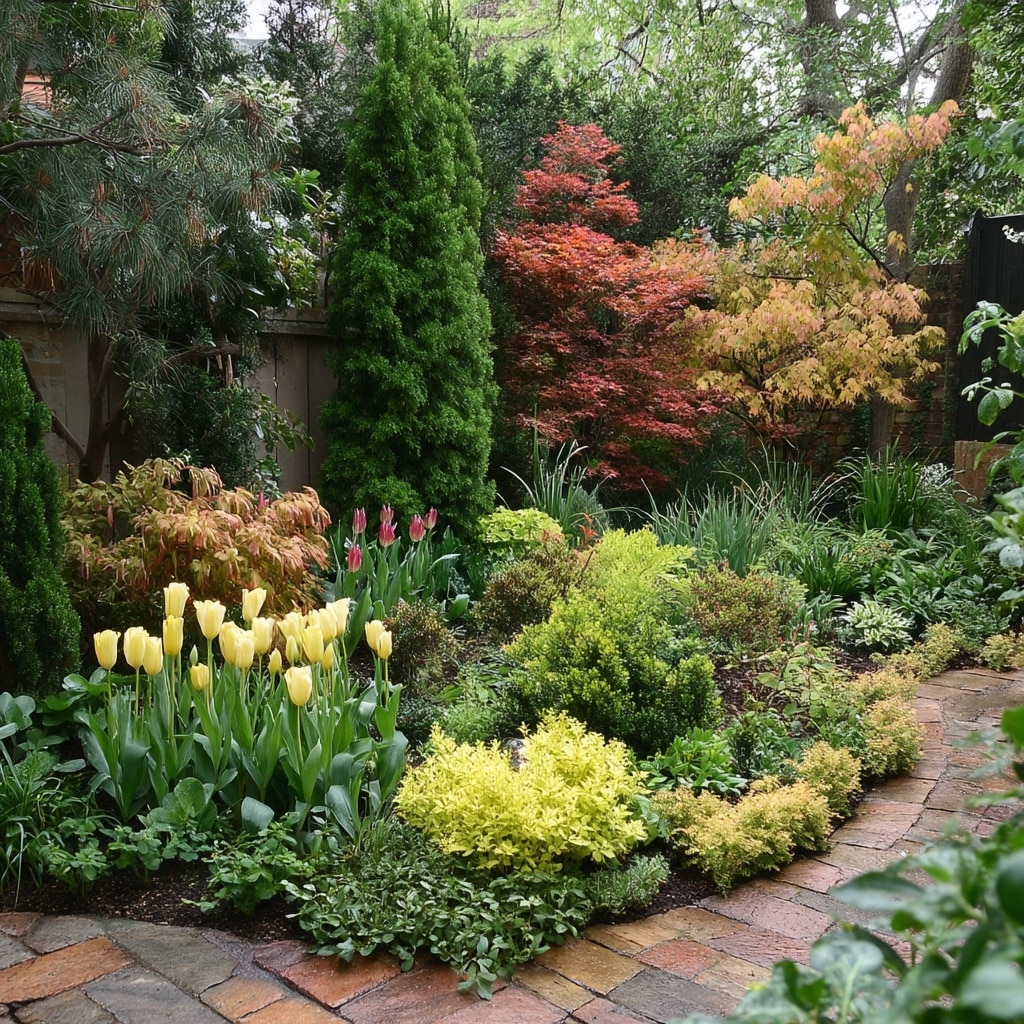
Great garden ideas don’t just look good in spring—they shine through every season. When working with limited space, every plant should earn its keep, which is why incorporating year-round interest is a smart strategy.
Think in layers: evergreens for winter structure, bulbs like daffodils or tulips for spring color, summer perennials for vibrant blooms, and ornamental grasses or shrubs with striking fall color. This rotating cast of plants keeps your garden visually appealing and dynamic, no matter the time of year.
Trees and shrubs like dwarf Japanese maples, boxwood, and hydrangeas add structure without overwhelming small spaces. Mix in plants with colorful bark, unique textures, or dramatic foliage to keep things interesting even when flowers aren’t in bloom.
Planning for four-season appeal means your garden always has something to offer—beauty, movement, and color, 365 days a year.
6. Plant Smart with Containers
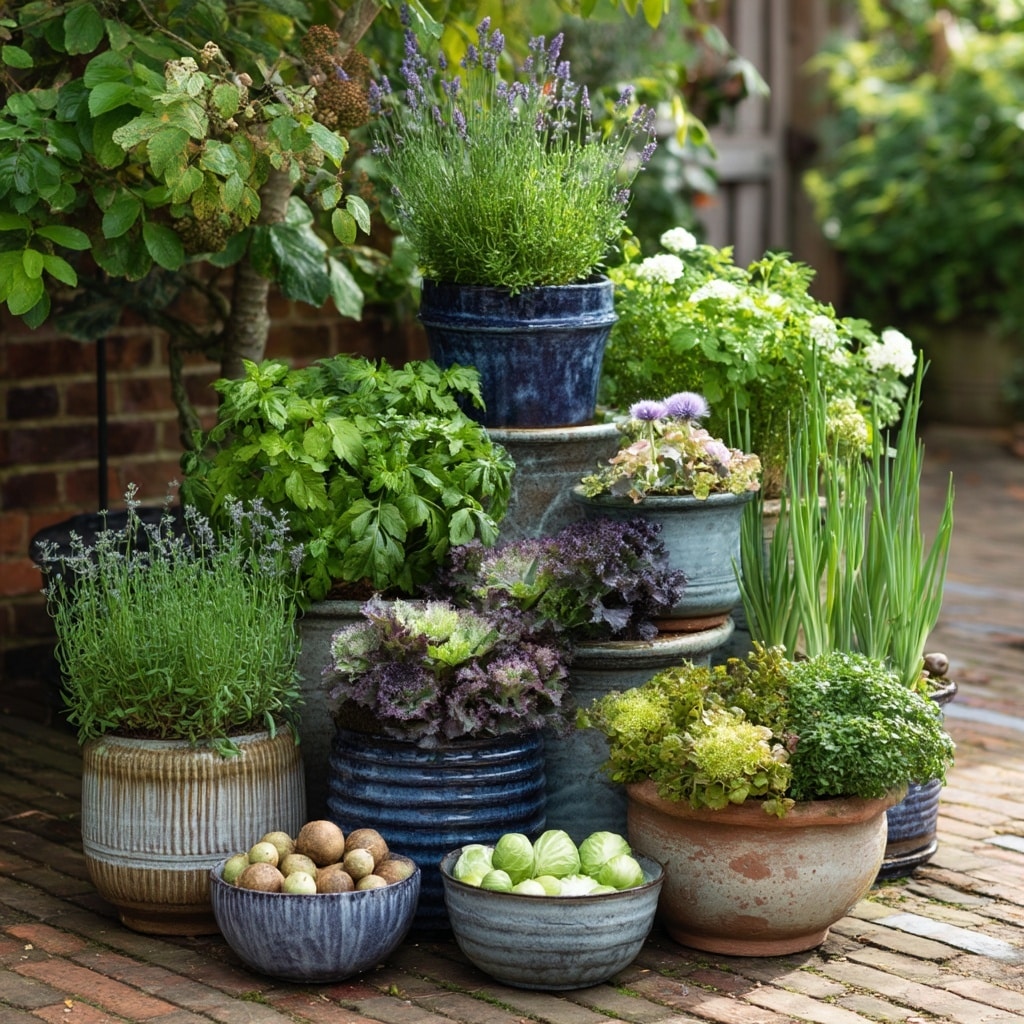
Container gardening is one of the most flexible garden ideas for tight spaces. Whether you’re working with a balcony, porch, or paved backyard, containers let you grow a wide variety of plants without needing garden beds or open soil.
Use pots, troughs, hanging planters, or even repurposed buckets—anything with good drainage can become a planting vessel. Look for compact or dwarf varieties of your favorite herbs, vegetables, and flowers to maximize your growing potential. Tomatoes, peppers, basil, lettuce, and even strawberries thrive in containers.
Containers are also easy to move, which means you can adjust your layout with the seasons or to follow the sun. Stackable or tiered containers add vertical interest and save even more space.
Pro tip: group containers by water and light needs to simplify maintenance, and stick with a cohesive color palette to keep the garden looking tidy and intentional.
7. Use Multi-functional Furniture to Save Space
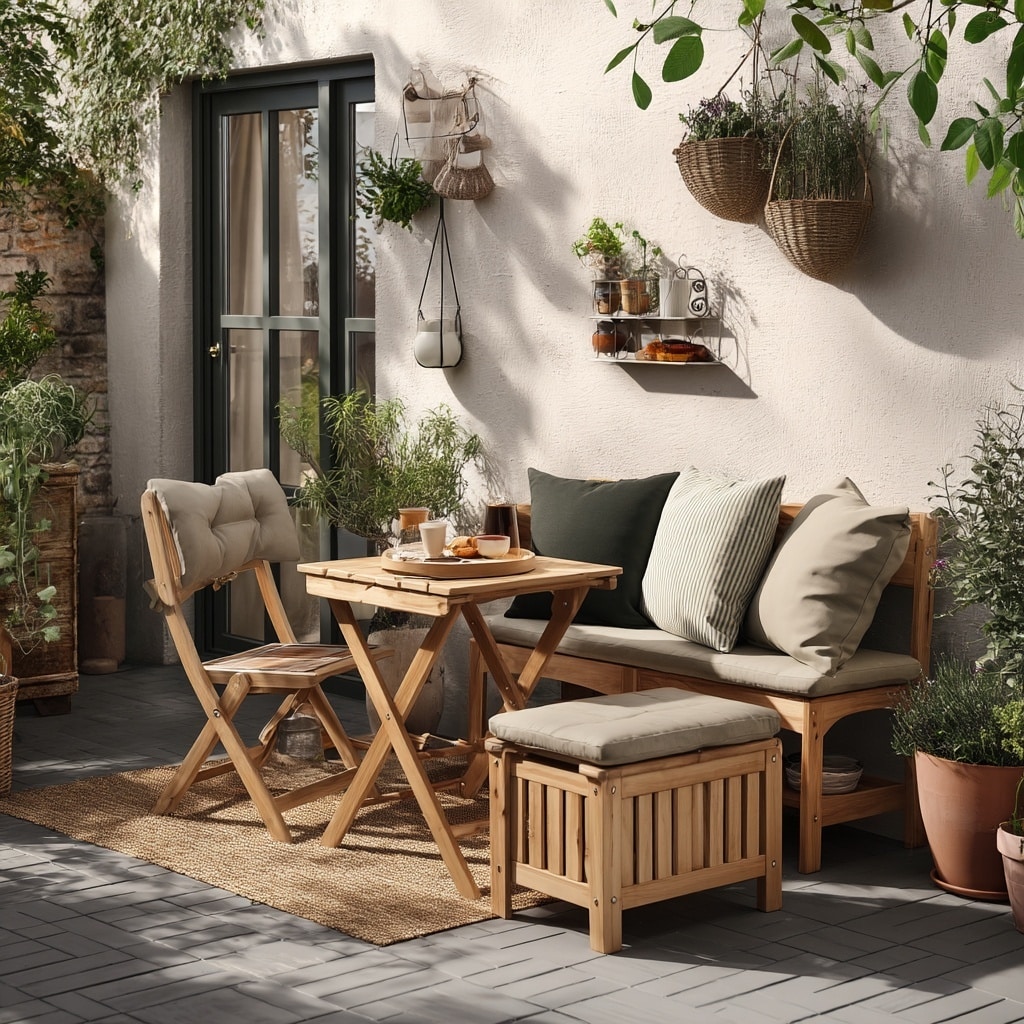
In small gardens, every inch matters—so furniture should be both stylish and smart. One of the most practical garden ideas for limited spaces is choosing multi-functional furniture that works double duty.
Think benches with hidden storage, foldable chairs, or tables that convert into potting stations. This not only minimizes clutter but also keeps essential tools and supplies within reach. Corner seating or built-in benches along fences help define cozy nooks without blocking movement or taking up valuable planting space.
Choose weather-resistant materials and keep furniture scale in proportion to your space—oversized pieces can overwhelm a compact garden. And if you love entertaining, go for collapsible or stackable options that can be tucked away when not in use.
Multi-purpose furniture lets you enjoy your garden more while keeping it organized and open—ideal for creating a relaxing, clutter-free retreat.
8. Light It Up with Outdoor Lighting

Good lighting can completely change how you experience your outdoor space—especially in the evening. As far as budget-friendly and impactful garden ideas go, adding outdoor lights ranks high for both function and charm.
String lights, lanterns, and solar-powered path markers are great options that don’t require major wiring or expense. Wrap fairy lights around a trellis, hang them above a seating area, or weave them through a vertical garden to create a warm, inviting glow.
Stick with warm white or yellow-toned lights—they’re softer on the eyes and far less disruptive to wildlife than harsh, blue-toned LEDs. Battery- or solar-powered fixtures offer flexibility and can be moved or adjusted with ease.
Besides aesthetics, outdoor lighting makes your space usable after dark and adds an extra layer of safety to paths and steps. It’s a small touch that makes your garden feel like an extension of your home—even at night.
Easy Care Tips for Small Gardens That Thrive
Even the best garden ideas need a bit of maintenance to succeed, but that doesn’t mean you have to spend hours every week. These simple care tips can help you keep your small garden healthy, vibrant, and manageable all year long:
🗺️ Know Your Zone
Understand your USDA planting zone so you can select plants that thrive in your local climate. This helps reduce failures and wasted effort.
🌱 Use Quality Soil
Start with nutrient-rich potting mix or raised bed soil. Look for blends that include compost and slow-release fertilizer for long-term support.
☀️ Match Sunlight to Plant Needs
Place sun-loving plants in the brightest spots and save shadier corners for varieties that tolerate less light. Always check the plant tag for sunlight requirements.
💧 Water Wisely
Most container gardens dry out faster than in-ground beds. Water regularly—especially in hot weather—but avoid overwatering. Use pots with drainage holes and consider drip irrigation for consistency.
🎨 Keep the Color Palette Simple
Too many colors can make small gardens feel busy. Stick to two or three complementary tones plus greenery for a cohesive, calming effect.
✂️ Prune and Deadhead
Keep plants neat and productive by trimming dead or leggy growth and removing spent blooms regularly. This encourages healthy new growth.
📐 Use Corners Creatively
Corners often go unused—add L-shaped benches, small water features, or triangular planters to maximize every inch of space.
With these tips, your small garden can stay low-maintenance and lush—letting you spend more time enjoying it than working in it.
Conclusion
No matter how limited your space may be, there’s no shortage of smart, stylish garden ideas to bring life, beauty, and function to your outdoor area. From vertical walls to compact plants and clever furniture, small gardens can still make a big impact.
With a bit of planning, the right plant choices, and a few creative design tweaks, you can build a lush green escape that fits your space—and your lifestyle. Choose the ideas that suit your needs best and enjoy a garden that feels both personal and purposeful, right outside your door.



